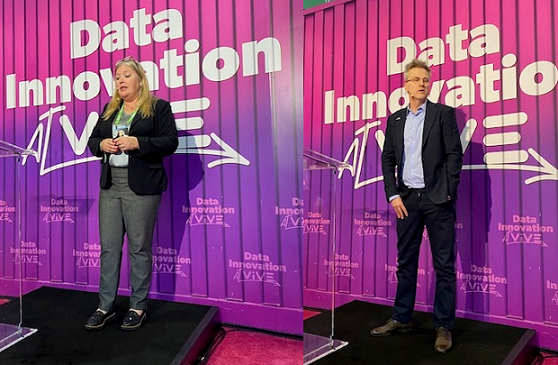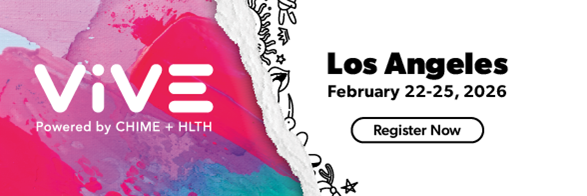 Another ViVE conference (the fourth) is in the books. This year ViVE published figures of over 9,000 attendees (1,500 C-Level), 800+ sponsors, and 10 stages filled with industry leaders. I never received final actual attendees but it didn’t feel like 9000 and especially by Tuesday afternoon when the mass exodus to beat the couple of inches of snow that blew in Tuesday night. But the crowd that was there was engaged, generally optimistic, up for networking, sharing in happy hours, and of course talking about Ai. What was obviously absent from the event was any federal voice or human. The crowd not so talkative about their absence or the news of our new HHS leader. I spent some time in the Interop/Ai Pavilion and took in some talks in the theaters. It was clear that this is what people were interested in. There was standing room only in all three theaters while the big stage sessions could hardly draw a quarter of the seats. Note for next year planning? Here are some takeaways of my session hopping. Not quite the same as bar hopping but I can assure you I was ready for a drink afterwards instead of asking myself why I drank so much. Look for Part 2 of my general sessions I attended later this week.
Another ViVE conference (the fourth) is in the books. This year ViVE published figures of over 9,000 attendees (1,500 C-Level), 800+ sponsors, and 10 stages filled with industry leaders. I never received final actual attendees but it didn’t feel like 9000 and especially by Tuesday afternoon when the mass exodus to beat the couple of inches of snow that blew in Tuesday night. But the crowd that was there was engaged, generally optimistic, up for networking, sharing in happy hours, and of course talking about Ai. What was obviously absent from the event was any federal voice or human. The crowd not so talkative about their absence or the news of our new HHS leader. I spent some time in the Interop/Ai Pavilion and took in some talks in the theaters. It was clear that this is what people were interested in. There was standing room only in all three theaters while the big stage sessions could hardly draw a quarter of the seats. Note for next year planning? Here are some takeaways of my session hopping. Not quite the same as bar hopping but I can assure you I was ready for a drink afterwards instead of asking myself why I drank so much. Look for Part 2 of my general sessions I attended later this week.
The Hidden ROP of Modern Patient Identity
Patient identity has changed drastically over the past few years. While healthcare data has never been at higher risk from pervasive cyberattacks, patient identity holds far greater benefits for healthcare organizations than just security. That was the theme of this talk with Jason Barr, VP Sales, Healthcare, ID.me and Marc Mar-Yohana, Founder & CEO, OtisHealth.
Native Login vs. Federated Login
A native login is logging into a system using credentials directly managed by that system. A federated login allows users to access multiple systems using credentials from a trusted third-party identity provider (IdP).
How many providers have you seen in your lifetime? How does this translate to portals, logins, and passwords you create and use? With a federated login like ID.me using passkeys, tokens, and authentication you are always you. The system does not need to analyze or try to identify or match you.

Expanding Technical Trust in Interop
Knowing and trusting an exchange partner is foundational to interoperability, but how does that trust happen is what Scott Stuewe, President and CEO and Kathryn Wickenhauser, Chief Strategy Officer of DirectTrust discussed. With DirectTrust you have technical trust mechanisms tied to identity that power Direct Secure Messaging, query-based exchange, and upcoming Facilitated FHIR®.
- Trust frameworks: Create a “network of trust” so that users don’t need to negotiate individual agreements
- Identity-proofing: Verify the identity of participants in health information exchange
- Trusted Network Accreditation Program: Reviews and assesses privacy, security, and other requirements for Health Information Networks
- Direct Secure Messaging: Allows secure communication between patients and providers
- Identity-verified credentials: Allow users to securely communicate with their providers

HL7 Vulcan
Enabling Clinical Research Infrastructure through Better Information Exchange
What is the power if we make clinical trial research interoperable? That is what Amy Cramer asked before talking about the Vulcan Project. The Vulcan HL7® FHIR® Accelerator is convening clinical research sponsors, including pharmaceutical companies and academic medical centers, EHR providers, clinical research sites and technology solutions providers to work together or a better future of connected clinical research and clinical care through HL7 FHIR. Steve Heard from J2 Interactive, their Chief Innovation Officer was there too, talking about being involved in the community.
The Mission
- Bridge clinical research and clinical care
- Strategically connect collaborators
- Maximize collective resources
- Enable Development of tools and solutions
- Education

ViVE Startup Pitch
This year’s #ViVEvent Startup Pitch saw 12 bold digital health entrepreneurs battle it out in a high-stakes showdown.
They pitched, they faced tough questions, and only one walked away with the big check.
Drumroll, please… 🥁
Congratulations to this year’s winner, Fuse! pic.twitter.com/dCaMoxSWjb
— ViVE (@theviveevent) February 19, 2025

